House made of timber reviews from owners: turnkey and pre-assembled. House made of timber reviews from owners: turnkey and pre-assembled House made of profiled timber 100 150
Rectangular beam
Do you doubt whether to build a house or not? It seems that construction will hit the family budget and it’s more profitable to buy an apartment? A wooden frame does not inspire confidence, but a rounded log has a high price? With the advent various types timber it became possible to build high-quality wooden house at low cost. Do you have any doubts? We will tell you how to choose a house made of timber, show reviews from owners, and educate you about the pros and cons. Reviews from owners about a turnkey timber house will help you decide and convince you of the benefits of construction.
Any timber is suitable for building houses: profiled or edged. For the construction of a small country house, you can use from 100x100 mm to 150x150 mm. A private residential or cottage is built using 200x200 mm. But the price of housing is a little high, so to keep costs to a minimum you can use sizes 100x150 mm, 150x200. If you use less technical side, you can assemble it faster country house, and its use as a technical side significantly reduces construction costs.
Reviews of a house made of material with a cross section of 100x100 and 100x150mm
Houses made of 100x100 timber are built mainly in summer cottages, since the thickness of the walls is not enough to retain heat in the winter. But assembling a box of material takes a long time. You can reduce installation time by using a section of 100x150 mm, where the technical side will be 100 mm. Reviews from owners about the construction of houses made of timber are mainly related to the quality characteristics of the material. Let's look at the most popular ones in table form:
| Characteristic | Owner reviews | |
| Positive | Negative | |
| Heat loss | Housing made of laminated timber measuring 100x100 built on summer cottage even without insulation, it retains heat well at outdoor temperatures up to +50C. | A country house used in winter will have to be additionally insulated with mineral wool or polyurethane foam. And if the walls are hidden under finishing, then it’s easier to assemble a frame one. Less material will be needed. |
| Additional finishing | If you build from glued or profiled chamber-drying, then there is no need to perform additional finishing of the dacha. | Construction from simple edged material of natural moisture with a cross-section of 100x100 mm must be finished, since the small size will not prevent cracking and twisting of the material. |
| Environmental friendliness | The timber structure of any section is environmentally friendly. | Glued laminated timber is not environmentally friendly enough due to the glue, and the frame structure will have to be additionally insulated. Insulation materials are not always environmentally friendly. |
| Quick assembly of the log house | It is not difficult to assemble a small country house from glued or profiled kiln-drying material with your own hands. And since the cross section is small, you can handle it alone. | It takes a long time to assemble the walls, since the cross-section is small. |
| Shrinkage | Shrinkage frame construction small. | A solid house made of material with natural moisture shrinks 10-15 cm within 3 years. |
It turns out that it is not worth building a large cottage with timber with a section of 100x100 mm, since heat losses without additional insulation of the walls will be large. But for country house and frame construction, the material is indispensable, since its price is 2-3 times lower than for a log or timber 200x200 mm.
Reviews of a house made of timber with a cross section of 150x150 mm
Houses made of profiled and edged timber with a cross-section of 150x150 mm can be used for the construction of permanent housing only in the southern regions, since the thickness of the walls is not enough to retain heat at an outside temperature of -15″C. But if you perform additional insulation of the walls, the housing will delight you even in the coldest winters. There is another option, to build housing with laminated veneer lumber. Glued lumber with a cross-section of 150x150 mm will be equal in heat-saving properties to kiln-dried timber with a cross-section of 250x200 mm. Let's consider reviews from owners about some characteristics of timber buildings for permanent residence with a cross-section of 150x150 mm in the form of a table:
| Characteristic | Reviews of timber housing with a section of 150x150 mm | |
| Positive | Negative | |
| Heat-saving properties of walls | House made of laminated timber | For the construction of a permanent residence structure, walls made of simple and profiled timber are a bit thin; in winter, they will have to be additionally insulated. |
| Speed of assembly | The box is assembled in 3-4 weeks. | The beam with a cross section of 150x150 mm is quite heavy, so it is difficult to work with it alone. |
| Additional finishing | A structure made of kiln-dried laminated or profiled timber does not need to be finished, the walls look aesthetically pleasing. | Natural moisture will crack over time and additional finishing will have to be done. |
| Shrinkage | A house made of chamber drying and glued material with a cross-section of 150x150 mm will shrink only 2-3%. | Shrinkage of natural humidity will be 10-15 cm. |
| Price | The price for a box made of laminated veneer lumber with a cross-section of 150x150 mm is lower than for a rounded log. | If you do additional finishing and insulation, the price of the structure will increase. |
It is better to build a structure for permanent residence with material with a cross-section of 150x150 mm, glued or profiled chamber-drying material. You can avoid additional costs for insulation and finishing if you use a section of 100x150 mm. Moreover, if you use the technical side of 100 mm, then you can quickly assemble a box from a material of 100x100 mm, and if it is 150 mm, then the cost of building a house for permanent residence, as with a section of 150x150 mm, will be reduced.
Reviews of houses made of 150x200 mm timber
Timber structures assembled with 150x200 material are suitable for permanent residence. They are complete and retain heat well even at a temperature of -350C. Reviews about the material are mostly positive:
| Characteristic | Reviews of a house made of timber with a section of 150x200 | |
| Positive | Negative | |
| Heat-saving properties | Saves heat even without additional insulation in winter. | If you use profiled natural moisture, the walls will crack over time and lose some of their heat-saving properties. And it will be difficult to perform additional caulking. |
| Shrinkage | Shrinkage of the walls of laminated and profiled timber of chamber drying is minimal. | Walls with natural moisture can shrink up to 10 cm. |
| Speed of assembly | You can assemble the box yourself in 2-3 weeks. You can get a turnkey house in 1-2 weeks. | If you use material with natural moisture, then the structures must stand for 1 year. |
| Price | The quality of the walls is the same as those made from timber with a cross-section of 200x200, and the price is lower. | The price of glued is higher than that of profiled or simple edged. |
If you use the 200 mm side as the technical side, then the quality of the wall will be no worse than from 200x200 mm timber; for the southern regions or from laminated veneer lumber, houses are built with a 150 mm technical side.
Why is it beneficial to use a rectangular section of timber?
Rectangular or twisted material for house construction It is more profitable to use, since the price on the market is lower. It’s just that to make a square section, for example 150x150 mm, you need a solid log; to make a twisted beam 150x100 mm, you will need a smaller amount of raw materials. So from a pine tree with a cross section of 300 mm you can get 1 square beam or 2 rectangular ones. It is more profitable to use a rectangular cross-section of timber for building houses for a number of reasons:
- The price for a finished box with a section of 150x100 or 200x150 is lower, and the wall thickness is the same.
- If you build a country house with your own hands, the front and back sides of a larger cross-section will allow you to use less material. Construction is carried out faster.
- The price for a rectangular section is lower, since it is cut from less wood.
- Turnkey houses with a rectangular section are below.
Reviews about houses made of timber are positive, but when it comes to high-quality laminated or profiled materials that are kiln-dried. In other cases, it is more profitable to build a frame structure and properly insulate the walls. And using imitation timber or a block house for finishing, you can achieve a visual copy of the structure made from solid material. For clarity, let’s compare houses made of laminated profiled chamber-drying and materials with natural humidity in the form of a table according to quality characteristics:
| Qualitative characteristics of the house | Natural moisture timber | Profiled natural humidity | Profiled chamber drying | Glued laminated timber |
| The building is suitable for permanent residence | Section from 150x200 mm, when the technical side is 200 mm | Section 150x200 mm and above. | Section from 100x150, when the technical side is 150 mm | |
| Wall cracking | + | + | Minimum | — |
| Additional insulation | It is necessary to re-caulk and insulate the façade. | It is necessary to insulate the façade; re-caulking is difficult. | Not necessary | Not necessary |
| Shrinkage first 3 years | 10-15 cm | 10-15 cm | 3-5 cm | 2-3 cm |
| Environmental friendliness | + | + | + | A house made of laminated veneer lumber is debatably environmentally friendly, since the adhesive composition used may be of poor quality. |
| Easy to assemble | If the walls are assembled with a cross-section of more than 150x200 or more, the material is heavy. | + | + | |
| Foundation | Simple strip, columnar, pile-screw, any lightweight, since a house made of wood is light in weight. | |||
If you have an idea to build a house with your own hands, then the difficulty of choosing a material will be relevant.
Most budget option There will be construction of a house from timber. Despite the cheapness of this material, the house will be quite warm, durable and strong.
After studying the Internet, you will find that in most cases it is advised to choose timber with a cross-section of 150x150 mm.

But if you do not want to attract additional labor, such lumber as dry timber 150x100 mm, which after erection and shrinkage can be insulated using mineral wool. The house will not be inferior in thermal insulation to other buildings made of larger cross-section timber.

Construction stages and foundation construction
And so, the material has been purchased, we begin building the house:

- Initially, it is necessary to clear the space and level the area for the foundation;
- In accordance with the composition of the soil, determine the type of foundation (specialized reference literature will help with this).
The foundation can be pile, monolithic or strip, which is more often used, because wooden houses relatively light.

After installing the foundation, the concrete should gain strength (3-4 weeks), then we proceed to laying the timber. Even before laying, it is necessary to prepare dowels (dowels) - this is what is used to fasten the timber laid in the crowns together. They are usually made from dense wood (larch).

If the beam size is 150x100 mm, dowels about 12 cm long are suitable. Also, the technology for laying timber requires laying inter-crown insulation. Usually this roll materials such as jute, you can also use tow or moss.

According to the advice of experts, you should use fresh red or peat moss that has been stored for no more than 3 weeks.
The first crown of the future house should be made of larch, which is not subject to rotting. For greater reliability, it can be treated with bitumen.

The beams of the first crown are fastened together using a technique known as “half a tree” - the ends of the beam are cut lengthwise and crosswise. It is also necessary to fasten such a knot using staples or nails.
Methods of attaching timber to the foundation
At the stage of pouring the base, bolts with curved or cone-shaped bases are installed in its top layer. The distance between such bolts should not exceed more than 0.5 m. There should be at least two bolts for each element of the first crown.

In the timber of the first crown, even before laying, it is necessary to drill holes for the studs located in the foundation.

Pre-cut roofing material is laid on top of the grillage, which acts as a waterproofing material.

After laying the first crown and securing it to the foundation studs using washers and locknuts, align the horizontal line so that the house turns out without distortions. It is also recommended to check the diagonals.

Having laid the first crown, we begin to build the walls.

For this you will need a variety of tools:
Note!

- Gasoline or electric saw;
- Hand-held circular saw;
- Drill;
- Level;
- Roulette;
- Axe;
- Hammer;
- Screwdriver;
- Hammer;
- Plane.
You also need consumables - nails, self-tapping screws, inter-crown insulation, fire-retardant impregnations.

After preparing everyone necessary materials and tools, we begin to build the walls of your future home. The timber is laid in rows (crowns) until the wall reaches the required height.

After laying 4-5 crowns, jambs for door and window openings are installed. At the next stage, the final construction of the walls under the roof takes place.

Construction of roof and floors
We strongly do not recommend saving on materials for roofing installation. This part of the house can be designed in several versions:

- Single-pitch;
- Gable;
- Hip;
- Tent;
- Half-hip;
- Multi-pincer;
- Vaulted and diamond roofing.
It all depends on your desire, funds and complexity of the rafter system.

Note!

Floors and ceilings in the house are also an important stage of construction. When arranging them, they are mainly guided by personal preferences, but high-quality waterproofing is mandatory for any manufacturing option. This is especially true for basements and plinths.


Photo of a house made of timber with your own hands






Note!








A private house with a size of 150 square meters is a universal option. It is able to provide you with the space you need for a comfortable stay, while they remain affordable. The Kostroma Fazenda company offers you everything you need to create high-quality and durable housing from environmentally friendly materials.
Prices for houses made of timber 150 sq.
In terms of price-quality ratio, a house of 150 sq. m. m are ideal because they allow you to provide yourself with a comfortable and prestigious cottage at a relatively low cost. The projects developed by our specialists provide for the creation of compact housing with various options distribution of internal premises. The final cost of each 150 sq. m timber house project depends on various parameters:
- external and interior decoration. Finishing building materials provide additional protection for the timber and visually change the building;
- number of storeys. Two floors will require more expense on the part of the customer, but this is the best way to expand the living space, fitting into the standard 150 m2;
- quantity of building materials used.
Each project is accompanied by colorful photos and a diagram demonstrating the features of its design.
All photos from the article
A house made of timber is an excellent choice in our time, when cities are filled with monsters made of steel, glass and concrete. A wooden house is, first of all, a corner of coziness, comfort and serenity; a great holiday is 100% guaranteed. At the same time, it is possible to significantly save on construction and carry out the bulk of the work yourself.

How to calculate the amount of timber per house
Even at the design stage, you will have to decide how many pieces of 100 by 150 mm timber are in a cube; the calculation is elementary - you just need to calculate the total volume of the walls.
The sequence of actions in this case is as follows:
- multiply by the perimeter of the house and the thickness of the wall;
- Then, using the prepared tables, we roughly estimate exactly how many cubes of lumber will be needed.
Note!
Gables are also often made from the same timber as the walls, so this also needs to be taken into account (usually the end result is simply overestimated by about 15-20%).
As for how many pieces there are in a cube of 150x100 mm timber, a lot also depends on its length; standard data is given for a length of 6.0 m. According to the tabular data, with dimensions of 150x100x6000 mm there will be 11.1 pieces in one cube (this is not difficult calculate, knowing the volume of one stick).

When building houses, there is often a need to use other dimensions of beams, for example, 8.0 m long. In this case, in order to find out how many beams are in a 100 by 150 mm cube, it is enough to calculate the volume of one piece 0.1∙0.15∙ 8.0 = 0.12 m3, and then calculate the number of timber in a cube 1/0.12 = 8.33 pcs.
Note!
When calculating the need for lumber, you need to know not only the volume of external walls, but also take into account the number of beams for the construction of floors, as well as partitions in the house.
Selecting the type of timber for building a house
In addition to calculating the number of beams for building a house, you also need to take into account a number of additional parameters that affect the construction process. Not only the price of the building, but also its durability will depend on this.
Which timber is better to choose
When there are plans to build a house from 100x150 timber, you first need to decide on the type of timber.
You will have to take into account factors such as:
- wood moisture If you plan to use undried lumber, then it is best to purchase timber prepared in winter. But in general perfect option– use of kiln-dried or glued lumber, their moisture content is already below 20%, so shrinkage will take minimal time;
We need a Finnish summer house! My husband and I want to build our own small wooden house. We have a plot. Friends suggest buying a Finnish house made of timber. We looked through many options, but we just can’t find a house that suits us - please advise. The Finnish 6x8 house does not amaze the imagination with its size, but it is cozy, well-groomed and there is definitely nothing superfluous in it. Quote - "I really like Finnish one-story projects- I'm a Finnish fan. I looked for a long time at similar projects from the “Turku” series - beauty. There are no problems with the sauna/bathhouse, I myself have a bathhouse in my house, the children will cause dirt, even with or without a vestibule. Inconvenience - there is no boiler room at the house. But in Finnish standard ones this is usually not the case, since there is no such problem." 5 bedrooms in the house design are a real country estate! Frame house"COUNTRY DREAM". Cost - 2,125,640 rubles. Dimensions: 10.100 x 11.200 Total area – 201.85 m2. The house has: five bedrooms, two bathrooms, a living room combined with a kitchen, an entrance hall, a technical room, two terraces with an area of 37 m2. An individual version of the layout of a house with a bathhouse is possible. Design and equipment on the website - http://domaizkomi-2.ru/zagorodnaya-mechta The most significant buildings in Rus' were erected from seasoned logs harvested from trees that are several hundred years old. The only criterion for the size of the structure was the size of the log - its length and thickness. Wooden huts built from logs were popularly called “log houses.” ... The simplest houses are four-walled, the dimensions of which depend on the length of the log. Splicing logs along the length was not used, and if it was necessary to enlarge the room, then several log cabins were simply placed nearby. More complex six- and eight-walled structures were used in the construction of churches and temples. As a rule, Russian huts were quadrangular. House made of chopped logs “Terem” Good and high quality wooden sauna Now it’s not luxury, not prestige, but the health of us and our family. Sauna made of chopped logs “BAKOVKA” Cost – 413,250 rubles. EQUIPMENT - WINTER Bathhouse size: 4,000 x 5,000 Total area: 20.0 m² Design and equipment on the website - http://domaizkomi-2.ru/banya-iz-rublenogo-brevna-bakovka Northern forest - Komi Republic, Kirov and Vologda regions. Houses made of carriages (semi-oval logs) have always been considered a “privilege” of the Russian village. Skilled carpenters in wooded areas created masterpieces of wooden architecture. In addition, the carriage is characterized by the following advantages: an increase in the usable area of the premises due to the flat surface of the wall (thickness 15-20 cm); in Russian felling, round logs form a wall of unequal thickness (on average 22 - 30 cm); ease of installation of electrical wiring and other communications. Bathhouse from the RUMYANTSEVO gun carriage. Cost without finishing – 348,750 rubles. Size - 5.000×5.
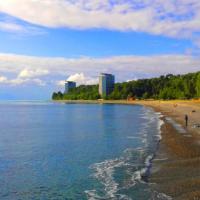 Are there mites in Pitsunda? Ticks in Abkhazia. Pitsunda pine grove
Are there mites in Pitsunda? Ticks in Abkhazia. Pitsunda pine grove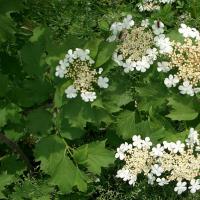 Red viburnum (Viburnum opulus L
Red viburnum (Viburnum opulus L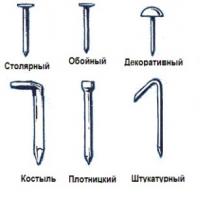 Nail Making Business How to Make Copper Nails
Nail Making Business How to Make Copper Nails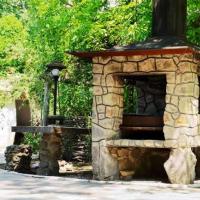 Stone brazier: material features and manufacturing options
Stone brazier: material features and manufacturing options Blackroot medicinal cultivation
Blackroot medicinal cultivation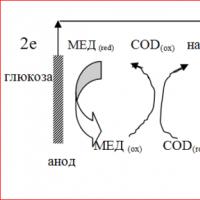 Fuel cells: a glimpse into the future
Fuel cells: a glimpse into the future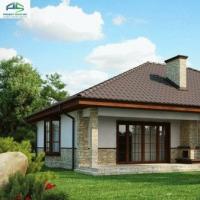 Houses with a hipped roof projects
Houses with a hipped roof projects